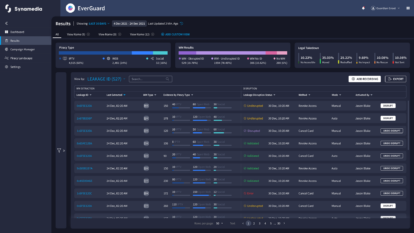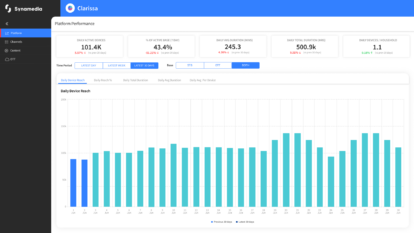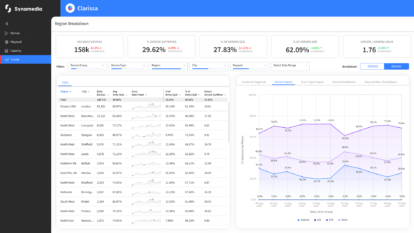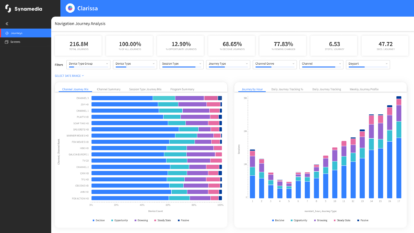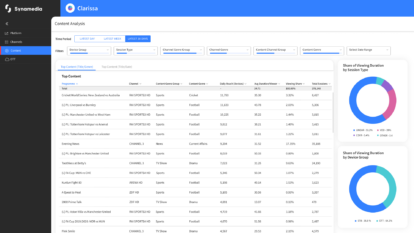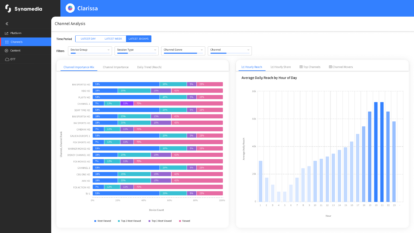In the world of sports streaming, success isn’t just about delivering high-quality content – it’s about doing so efficiently, reliably and cost-effectively. The debate between Software-as-a-Service (SaaS) and on-premises solutions often focuses on costs. While SaaS may appear more costly, it’s best understood by comparing it to an iceberg: with on-premises solutions, the visible costs are merely the tip, concealing a massive underwater structure of hidden expenses. In contrast, with SaaS, what you see is what you get.
The Unique Rhythm of Sports Streaming
Sports content delivery follows a distinctive pattern, differing from traditional 24/7 broadcasting due to its intense peaks of activity followed by quieter periods. Consider a typical sports season when matches are on the weekends, with holiday periods seeing spikes in viewership when audiences are more available. By the end of the season, there are fewer but higher-stakes games, drawing larger audiences. Then there is the off-season where minimal infrastructure is needed.
We all know that traditional on-prem infrastructure requires you to maintain constant high capacity, beyond the consumption peaks and into the valleys. But how clear are we on the financial benefits, particularly regarding hidden costs?
The CapEx and OpEx Icebergs
The transition from capital expenditure (CapEx) to operational expenditure (OpEx) is more than just a different way to manage costs: It’s about aligning your investment with your actual usage patterns. Instead of making large upfront investments in infrastructure – and its associated monitoring and management – that will, at some point, sit idle, with OpEx you can scale resources up and down based on event schedules, define and manage your budget throughout the year, pay only for what you actually use, and redirect resources from infrastructure management to innovation.
Think of the economics of streaming infrastructure as two icebergs. With on-prem solutions, the initial costs are deceptively low above the waterline, yet a massive structure of hidden expenses lurks below – from hardware and electricity to real estate, cooling systems, and an army of network, IT, and other specialty staff. In contrast, SaaS solutions might show a higher visible cost, but that’s truly all there is – no hidden infrastructure costs lurk beneath the surface.
Instead, what lies below are valuable capabilities: premium video quality, just-in-time delivery, CDN optimization, comprehensive technical support, and it’s always up to date benefiting from constant evolution of the tool – all included in that visible cost.
Real world challenges
These SaaS capabilities become even more crucial when considering the global nature of sports content delivery. Take European sports leagues, for example, where content needs to be delivered globally across many time zones, language requirements, technical standards, quality expectations, etc. What was once complex for them is now easy with Synamedia Quortex Link’s one-click cloud distribution that enables you to reliably live distribute to partners from and to all around the world.
In one specific example, a major US regional sports network needed to use three satellite transponders – one for national and two for regional distribution – despite only using the capacity for two hours each day. By moving to SaaS, IP-based distribution, they now scale resources based on event schedules and only pay for what they use. This means their distribution costs now directly correlate with their partners’ consumption, resulting in annual savings exceeding one million dollars.
The Time-to-Market Advantage
In traditional deployments, setting up new infrastructure can take as long as 6-9 months. With SaaS, you can be operational in days or weeks. This agility allows you to respond to market opportunities, test new markets with minimal risk, scale services based on actual demand, and quickly implement new features and capabilities.
Not only does SaaS provide more technical flexibility for sports streamers, but it also benefits suppliers with a newfound freedom to innovate a build and test model repeatedly in labs, instead of operating in a vacuum.
The SaaS Partnership
Synamedia’s approach to SaaS isn’t just about providing tools – it’s also about building long-term partnerships. We understand that complex environments require ongoing support and optimization, and that each customer’s journey to the cloud is unique.
Synamedia’s Quortex solutions are designed to grow with your needs. They’re built to not just solve today’s challenges but build the foundation for next-generation services, enhanced viewing experiences, improved operational efficiency, and new revenue opportunities.
While the immediate cost benefits of SaaS are clear, the true value lies in the comprehensive solution it provides. From managing seasonal peaks to enabling global reach, from reducing time-to-market to ensuring future readiness, SaaS delivers benefits that extend far beyond the visible surface.
Learn more about Synamedia Quortex SaaS solutions here.
About the Author
Cyrille Berson leads the D2C video streaming market segment for Synamedia’s Video Network business. He drives portfolio strategy, helping customers improve streaming services with just in time processing and flexible video delivery innovations that result in new consumer experiences.
Cyrille has spent 20 years in the M&E tech sector with a focus on video processing and delivery product management. He has helped many of the largest multi-screen operators achieve great results.
His accomplishments include leading the product team that demonstrated the first 4K software encoder in 2015; delivering the first professional encoding solution on OpenStack that same year; and more recently launching industry-first AI enhancements to Synamedia’s Fluid Edge CDN solution.

